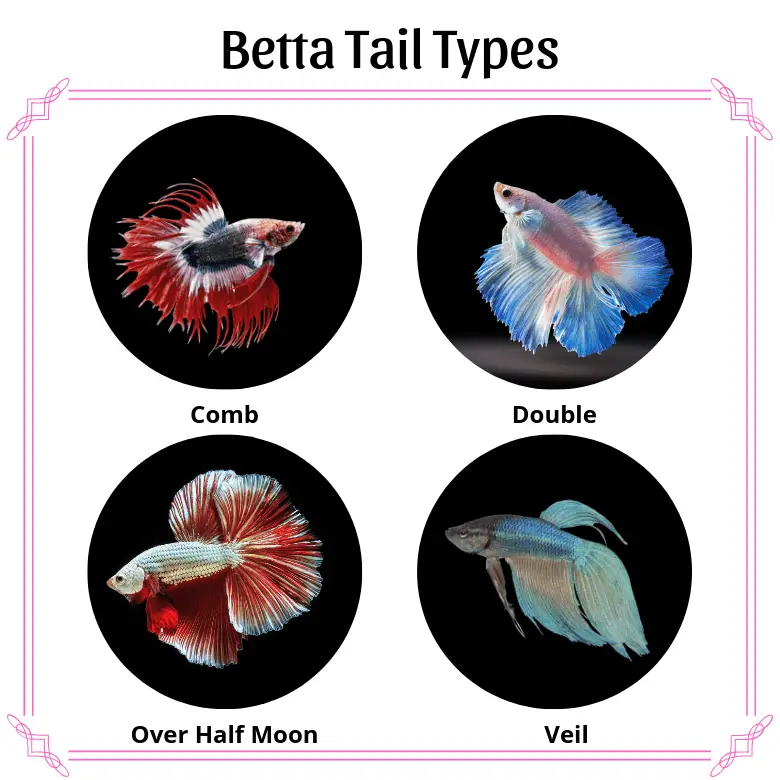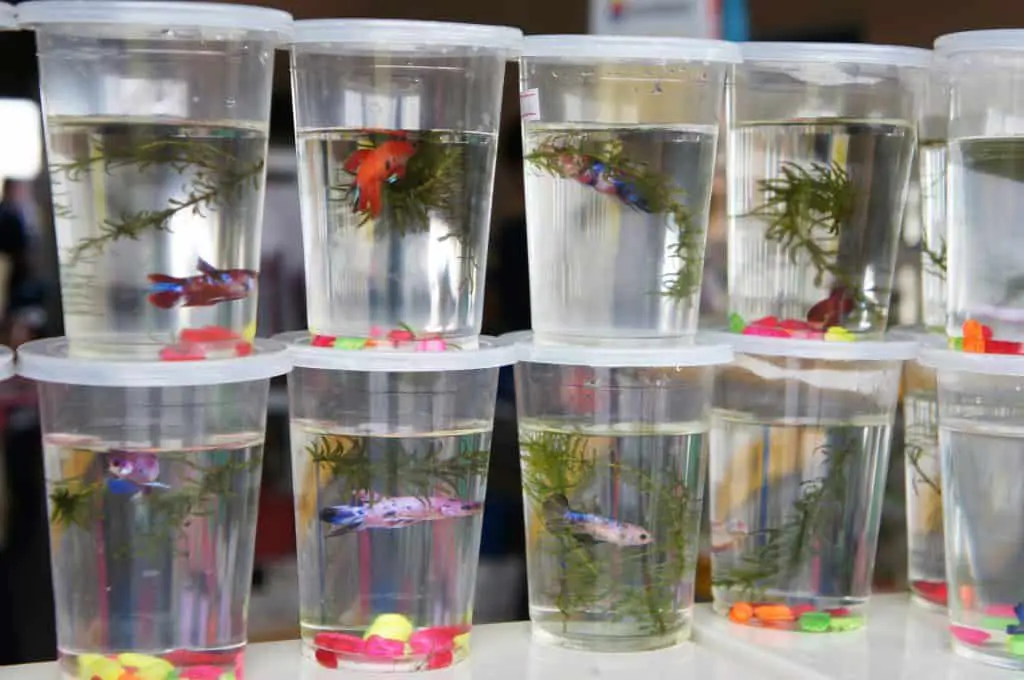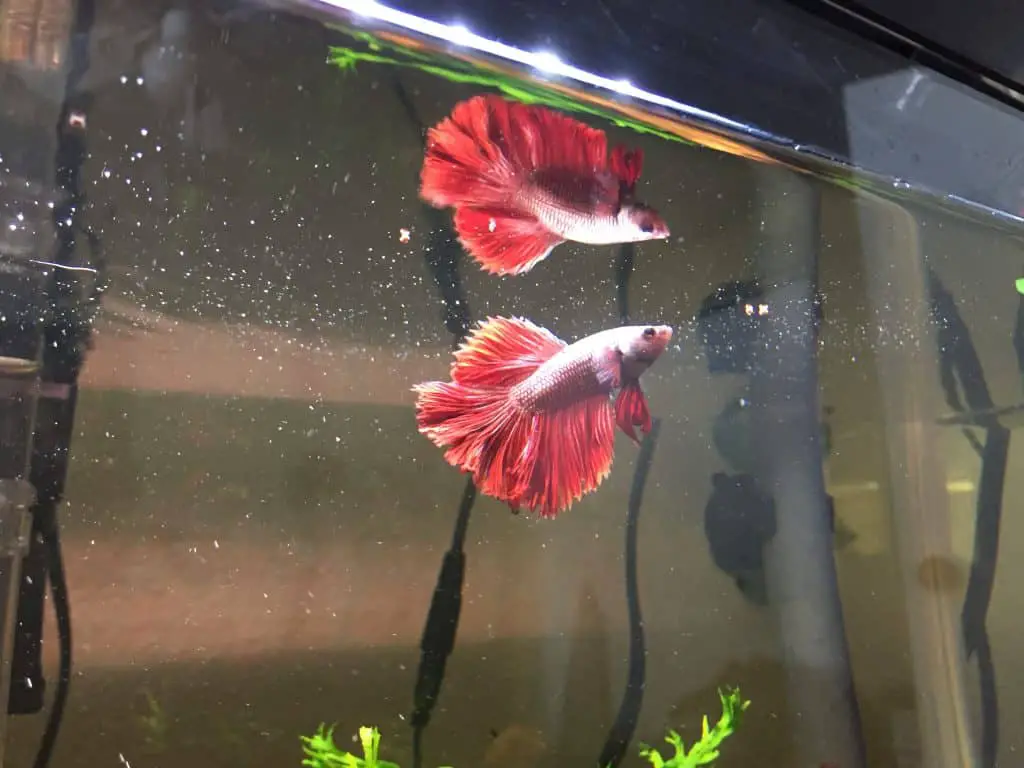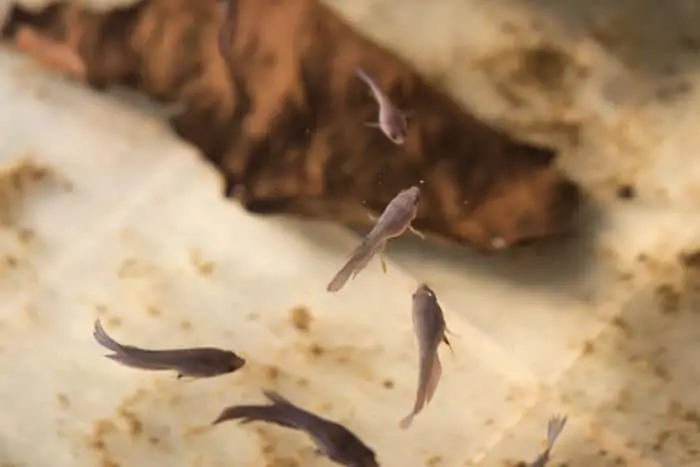Introducing the Siamese Fighting Fish
Betta fish were historically known as Siamese fighting fish. They have had a relationship with humans going back more than 200 years. As their historical name implies, these fish were first used for sport fighting in southeast Asia. Now, they are known as one of the most popular aquarium fish. This is no doubt due to hardiness and aesthetic appeal.
History of The Betta Fish
Bettas have been kept by humans for centuries. In what was once known as Siam (Thailand) they were even kept as royal pets. Native to Thailand, Cambodia, Laos, and Vietnam these fish first became known to the rest of the world in the 1900s. The original Bettas taken from the wild were not as colorful as they are now. They were originally bred for their fighting ability and later bred for their looks.

It was in 1850 that the Danish zoologist Theodore Cantor came into possession of one of these Siamese Fighting Fish. He incorrectly thought it was a variety of already identified Betta fish. In 1909 one of these specimens made it to an American named Charles Tate Regen. It was Regen who realized they were a new species in their own right. He gave the fish the official Latin name of Betta Splendens, which in Latin means the splendid Betta.
Description and Characteristics
Betta Splendins is only one of many species in the Betta family. Betta Splendins is the most widespread variety and what you will find in most pet stores. There are many Betta fish breeds in the wild such as the Betta Akarensis, Betta Coccina, and Betta Picta.
In the very early days, Bettas were a dull blue, green, red, or white. In more recent times there has been selective breeding and crossing with wild varieties. This has lead to a vast array of different colors and patterns. Some common pattern types are solid, Koi, butterfly, and Bi-color.
Breeders haven’t focused on just color. They have also bred beyond the natural short veil tail type fin. You can now find Bettas with a wide variety of tail types such as veil tails, double tails, crown tails, and rose tails.

Most bettas are about 2.5 to 3 inches long with the females being slightly smaller than the males. The females are also not as colorful and have shorter fins. Both sexes do have the same streamlined body and large upturned jaw for feeding at the surface of the water.
There is another key distinction that separates bettas from other aquarium fish. This is their ability to breath oxygen from the air as well as dissolved oxygen from the water. This is made possible by something called the Labyrinth organ. Fish with this remarkable adaptation are known as Anabantoids. This is the reason bettas can live in a tiny container without the need for a bubbler.
- Scientific Name: Betta Splendins
- Family: Osphronemidae
- Sub-Family: Belontiinae
- Origin: Thailand, Cambodia, Laos, Vietnam
- Lifespan: 2-4 years (average in captivity)
- Size: 2.5 – 3 inches
- Minimum Tank Size: 2.5 gallon
- Breeding: Egg Layer (bubble nest)
- Temperature: 75-80 degrees F
Natural Habitat
In the wild bettas are found in heavily vegetated pools of water. These pools have little water flow and low dissolved oxygen. This includes marshes, rice paddies, and slow moving streams. The water is generally turbid or murky. This is due to the tannins that are released by the abundant decaying plant matter.
During the dry season Bettas often become trapped in small pools of muddy water. Oftentimes they will use their jumping ability to move from a dwindling pond to another pond. Unless their pool completely dries out they have the remarkable ability to survive in these poor conditions until the rainy season returns. This is due to their Labyrinth organ which gives the ability to breathe air as described above.
Aquarium Needs and Care
While hardy and a very easy fish to keep, Bettas do have needs that are often overlooked. Bettas will live their longest, look their best and be the most active if their needs are adequately met.
Aquarium Size
Bettas are often displayed in tiny little containers with no heater or filter. While they are hardy and can survive like this, it is far from ideal. The size of container needed for bettas is one of the biggest misconceptions about this fish. Bettas kept like this are often inactive and have shortened life spans.

There are a few reasons small tanks are unhealthy. Firstly, there is no filtration device or media to hold beneficial bacteria. In such an environment ammonia accumulates quickly from the fish’s waste. This is a toxic environment and is a serious stressor to the fish.
Temperature is another issue. These containers are not heated and bettas are a tropical fish. They need a consistent temperature of around 78 degrees Fahrenheit. Besides not being warm enough, small containers have little water volume. This makes them more prone to temperature fluctuations. Both of these are stressors to a Bettas health.
Bettas also need room to swim freely and exercise. They are naturally curious fish. It is a joy to watch them explore a large, well laid out aquarium with plants and decor. This provides a healthy stress-free environment.
Bettas need at least a 2.5-gallon tank with 10 gallons being ideal. They also need some type of heater that can maintain a temperature of 78 degrees F.
There are aquarium kits available that are the perfect size for a Betta. The best betta fish tanks will have almost everything you need to get started.
Diet
In the wild Bettas feed primarily on insects. They will eat insects that have fallen in the water or insects that live in the water. One main source of food is mosquito larvae. In addition to insects, they graze on small snacks such as algae. This grazing in between larger meals is necessary due to the bettas fast metabolism.
In captivity, Bettas should be fed a varied diet to maintain optimal health. Live foods such as mosquito larvae, brine shrimp or micro worms are ideal. These can be raised at home without too much effort or purchased at some pet stores. This approach is not for everyone though.
If live food is not an option Bettas will still do quite well on specialized betta pellets/grains. This should be supplemented with freeze-dried bloodworms, daphnia or brine shrimp as a treat.

Bettas should be fed 1 or 2 times a day. A good rule of thumb is to feed them just enough food to take them 2 minutes to eat it. Missing a feeding time occasionally will not harm them and may even be good for their health.
Automatic fish feeders can help keep their feeding times consistent. Unfortunately most auto fish feeders don’t do a good job of dispensing the small precise amount of food needed for a betta. I have had great luck using the Fish Mate F14 however.
Behavior, Breeding and Development
The behavior of Bettas is different from many other aquarium fish. They are best known for their aggression towards other bettas. They also have interesting mating behaviors as well.
Aggression
The most well known behavioral trait of the Betta is their aggression towards other fish. Male bettas instinctively fight with one another over territory. It is for this reason they were first taken into captivity and fought. It is also the reason no more than one male betta should be kept in a tank.
Bettas have been bred for competitive fighting for centuries. Wild bettas may only fight for 15 minutes but a captive bred betta will fight for more than an hour. It should be said, however, that fighting any animal for sport is illegal in most countries.
This aggressive stance is when the male betta is at his most beautiful. When confronted with a perceived threat he will spread out his fins and flare his gill covers. A perceived threat can be one as little as seeing his own reflection in a mirror. At betta fish shows, the Bettas are placed next to each other in small containers and this is enough to bring out the flaring.
Female bettas are not nearly as aggressive as the males. They are often kept with other females in “sorority tanks”. They may chase each other around when first introduced, but this behavior is mostly to establish the hierarchy in the tank. They will display some of the same flaring of the fins and gill covers as the male fish. Typically the larger the tank the less of an issue this will be.
Breeding
Betta fish are bubble nesters. What is a bubble nest you may ask? When a male betta is ready to mate he will start to blow bubbles at the surface of the water. These bubbles are coated with saliva and will begin to accumulate in one place. If all goes according to his plan, this bubble nest will soon be home to fertilized eggs and eventually fry.
Male bettas don’t even need a female present to exhibit this behavior. Bubble nesting is actually a good sign in an aquarium because it means the betta is healthy and happy.
At this point, if the male betta is so lucky as to have a female present, courtship begins. This process can be quite rough on the female and may result in torn fins. During the actual process of spawning, the male will wrap his body around the female. Once spawning occurs eggs and milt are released into the water. As the eggs are released and begin to sink they are fertilized by the milt.
The male betta will begin to collect these fertilized eggs in his mouth and place them in the bubble nest. Female bettas will often begin to eat the fertilized eggs. It is for this reason that the male will aggressively chase off the female. If she is left in an aquarium with the male he may go so far as to kill her. So she should be removed immediately.
Early Development

The male will protect and look after the eggs. He will keep them in the nest and repair it as needed. After 24-36 hours the eggs will hatch. These newly hatched larvae will stay in the nest for an additional 2-3 days as their yolk sacs are absorbed. If bred in an aquarium the male should be removed shortly after the fry leaves the nest. This is to prevent the male from eating the young.
During the first 3 to 6 weeks of their lives, the free swimming fry are totally dependant on their gills. This is because their labyrinth organ is not yet fully formed and functional.
It isn’t until about 3 months old that the young bettas will begin to show their colors and fin shapes. At this point, it is easy to sex the bettas as the males will be visibly more colorful and have longer fins. The males will also begin to show aggression and fight each other.
Sexual maturity is reached as early as 4 to 5 months.
How Long Do Betta Fish Live?
Betta fish can live up to 5 years old in captivity. Unfortunately, the average betta fish lives only 2 years. This is due to the substandard conditions many betta fish are kept in. As we discussed earlier small betta bowls with no heat or filtration will stress a betta and reduce its lifespan.
If you take care of your betta and make sure its needs are adequately met you can reasonably expect your betta to live at least 3 years. Keep in mind that most bettas at pet stores are already 6 months to a 1 old when you buy them.
Tank Mates
Despite their aggressive tendencies, there are certain tank mates that can work with Bettas. Female bettas, for instance, can be kept with other females in sorority tanks. There are even a variety of tank mates that can safely be placed with a male betta. Or if you have a large enough tank (10 or more gallons) you can have more than one male betta with a tank divider.
There are a few key criteria to keep in mind when selecting a tank mate for a Betta. You should avoid fish with bright colors and long flowy fins. A male betta will likely mistake one of these fish for another male betta and become aggressive. And on the flip side avoid other aggressive fish known as fin nibblers.
Something else that needs to be considered with tank mates is tank size. More aquarium inhabitants will, of course, need more space. If you are considering any companions it is best to have a 20-gallon tank or larger tank.
Generally suitable betta tank mates
- Snails (Zebra, Mystery, etc)
- African Dwarf Frogs
- Ghost or Cherry Shrimp
- Cory Catfish (Pygmy, Albino, etc)
- Feeder guppies
- Otocinclus Catfish (Dwarf Suckers, etc)
Unsuitable Betta Tank Mates
- Angelfish
- Tiger Barbs
- Fancy Guppies
It’s best to add a male Betta to a tank after or at the same time you add the tank mates. This will introduce the betta to the tank mates before it has had a chance to establish its territory. Once a Betta has established its territory it is more likely to become aggressive.
Even with tank mates deemed suitable, attention must be given to how the Betta responds to its new friends. Each individual Betta is different. Some may even decide they don’t like your new Cherry Shrimp. This will lead to stress for all the tanks inhabitants. So be ready with a backup plan if it doesn’t work out.
Conclusion
As you can see there is an awful lot to this little fish. For many people, Bettas become their singular obsession. I have only touched on the basics and one can go a lot deeper into this subject. If this is you I suggest taking a look at the International Betta Congress. This is a non-profit organization dedicated to Bettas. They host Betta shows and even have their own Betta focused magazine.

